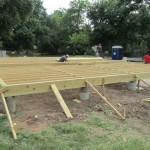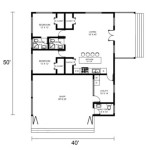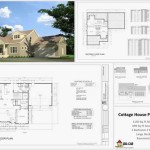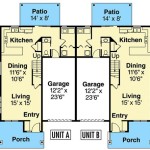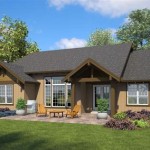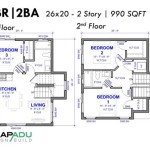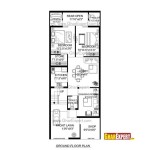3-Story Victorian House Plans: Exploring Opulence and Verticality
Victorian architecture, renowned for its ornate detailing, asymmetrical facades, and romantic charm, experienced a surge in popularity during the reign of Queen Victoria (1837-1901). Among the numerous architectural styles that emerged during this era, the three-story Victorian house stands out as a particularly impressive and captivating example of residential design. These structures, characterized by their verticality and elaborate embellishments, offer a glimpse into the past while providing ample living space for contemporary homeowners. This article will delve into the defining characteristics, historical context, and key considerations for those considering 3-story Victorian house plans.
Victorian architecture is not a single, monolithic style but rather an umbrella term encompassing a range of sub-styles, each with distinct features. Some of the most prominent include Queen Anne, Italianate, Gothic Revival, and Stick-Eastlake. These sub-styles often blended, resulting in homes that showcased a unique combination of architectural elements. The three-story Victorian, regardless of its sub-style allegiance, always prioritized vertical expansion, leading to a visually striking impact on the landscape.
Defining Characteristics of a 3-Story Victorian House
Several key features consistently define the 3-story Victorian house, regardless of the specific sub-style. Understanding these characteristics is crucial for identifying and appreciating the aesthetic of these homes.
Firstly, the defining characteristic is, naturally, its three-story structure. This verticality allows for a substantial footprint while providing significant living space. The height often contributes to a sense of grandeur and presence, making the house a prominent feature on its street.
Asymmetrical facades represent another hallmark of Victorian architecture. Unlike the symmetrical designs of earlier architectural periods, Victorian homes embraced asymmetry, often incorporating projecting bays, towers, and gables. This asymmetry creates visual interest and dynamism, avoiding the monotony of strictly balanced designs.
Elaborate ornamentation is perhaps the most recognizable aspect of Victorian architecture. This includes intricate millwork, decorative brackets, spindlework, stained glass windows, and patterned shingles. These details were often mass-produced during the Victorian era, making them accessible to a wider range of homeowners and contributing to their widespread adoption.
Gabled roofs, often steeply pitched, are another common feature. These roofs frequently incorporate dormers, providing natural light and ventilation to the upper floors. The gables themselves are often adorned with decorative elements such as bargeboards and finials, further enhancing the visual appeal of the roofline.
Porches, often wraparound, are an integral part of Victorian house design. These porches provide outdoor living space and serve as a transition between the interior and exterior. They are typically adorned with decorative columns, railings, and brackets, reflecting the overall aesthetic of the house.
Large windows are also a significant characteristic, maximizing natural light inside the home. These windows often feature multiple panes and are sometimes adorned with stained glass or decorative trim. Larger windows, especially those in bay windows, became accessible with manufacturing advancements of the time.
Historical Context and Evolution
The rise of the 3-story Victorian house can be attributed to several factors during the Victorian era. The Industrial Revolution brought about significant technological advancements, including mass production techniques that made ornate architectural details more affordable. This allowed builders to incorporate elaborate embellishments into homes without significantly increasing costs.
Furthermore, the Victorian era experienced a period of economic prosperity, leading to a growing middle class with increased purchasing power. This burgeoning middle class sought homes that reflected their newfound status and aspirations, fueling the demand for larger and more elaborate houses.
Social and cultural factors also played a role. The Victorian era was characterized by a sense of romanticism and nostalgia for the past. This influenced architectural design, leading to a revival of historical styles such as Gothic Revival and Italianate. The emphasis on family and domesticity further contributed to the desire for larger homes with ample space for family members and guests.
As the Victorian era progressed, different styles emerged and evolved. Early Victorian homes often featured simpler designs with less ornamentation, reflecting the influence of earlier architectural traditions. Later Victorian homes, particularly those built during the Queen Anne period, embraced more elaborate designs with intricate detailing and vibrant colors.
The 3-story Victorian house played a significant role in shaping the urban and suburban landscape during the Victorian era. These homes were often built in upscale neighborhoods and became symbols of wealth and status. Their presence contributed to the overall character and charm of many historic towns and cities.
Considerations for Modern 3-Story Victorian House Plans
While preserving the historical charm of a 3-story Victorian house is paramount, modern homeowners often require modifications to suit contemporary lifestyles. Several key considerations come into play when planning and executing these modifications.
Maintaining architectural integrity is crucial. When making changes, it is essential to preserve the original architectural details and materials as much as possible. This may involve restoring existing features or sourcing historically accurate replacements. Working with architects and contractors who specialize in Victorian architecture is highly recommended to ensure that any modifications are sympathetic to the original design.
Modernizing the interior layout is another important consideration. Victorian homes often featured compartmentalized layouts with separate rooms for various functions. Modern homeowners may prefer a more open and flowing layout that facilitates social interaction and allows for better natural light. This may involve removing walls or reconfiguring existing spaces while still maintaining the character of the home.
Updating essential systems is also necessary. Victorian homes often have outdated plumbing, electrical, and heating systems. These systems should be upgraded to meet modern standards for safety and efficiency. This may involve replacing old wiring, installing new plumbing fixtures, and upgrading the heating and cooling systems.
Addressing accessibility issues is another important consideration. Victorian homes were not designed with accessibility in mind. Adding ramps, elevators, or other accessibility features may be necessary to accommodate residents or visitors with mobility limitations. These features should be integrated into the design in a way that minimizes their impact on the overall aesthetic of the house.
Energy efficiency is becoming increasingly important for homeowners. Victorian homes often have poor insulation and leaky windows, leading to high energy bills. Improving insulation, replacing windows with energy-efficient models, and installing solar panels can significantly reduce energy consumption and lower utility costs. These upgrades should be done in a way that preserves the historical character of the house.
Landscaping and exterior maintenance are also important considerations. Victorian homes often have elaborate gardens and landscaping features. Maintaining these features requires ongoing effort and attention. Regular painting, repairs, and cleaning are also essential to preserve the exterior of the house and prevent deterioration.
Adapting a 3-story Victorian house plan for modern living requires a careful balance between preserving historical charm and incorporating contemporary amenities. By considering these key factors, homeowners can create a living space that is both beautiful and functional, allowing them to enjoy the best of both worlds.
Working with preservation societies and historical commissions can provide valuable guidance and support for homeowners undertaking renovation projects on Victorian homes. These organizations can offer advice on best practices, provide access to historical resources, and help ensure that any modifications are in accordance with local preservation guidelines. Engaging with these groups not only aids in preserving the historical integrity of the property but also contributes to the overall preservation of the community's architectural heritage.

1879 Nayack Ny 3 Story Mansion Blueprint Victorian House Plans Homes Floor Plan

Victorian House Plans Home Design Gml D 756 19255 Layout Mansion

Custom 2 Story Houses New Two Home Plans Housing Development D

Victorian Style House Plan 3 Beds Baths 3457 Sq Ft 124 559 Houseplans Com

Victorian Style House Plan 3 Beds 5 Baths 2566 Sq Ft 72 885 Homeplans Com
Victorian House Plans Home Design Gml D 756 19255

House Plans Victorian Vintage Sims

Plan 063h 0184 The House

Nice Layout Victorian House Plan With 3965 Square Feet And 4 Bedrooms S From Dream Home So Plans Basement Blueprints

Victorian House Plans Floor The Designers

